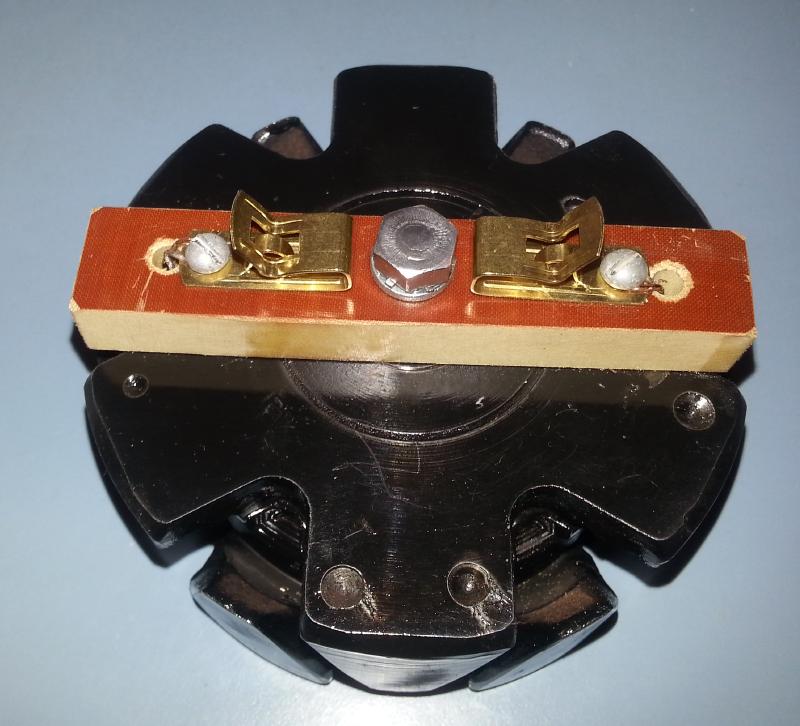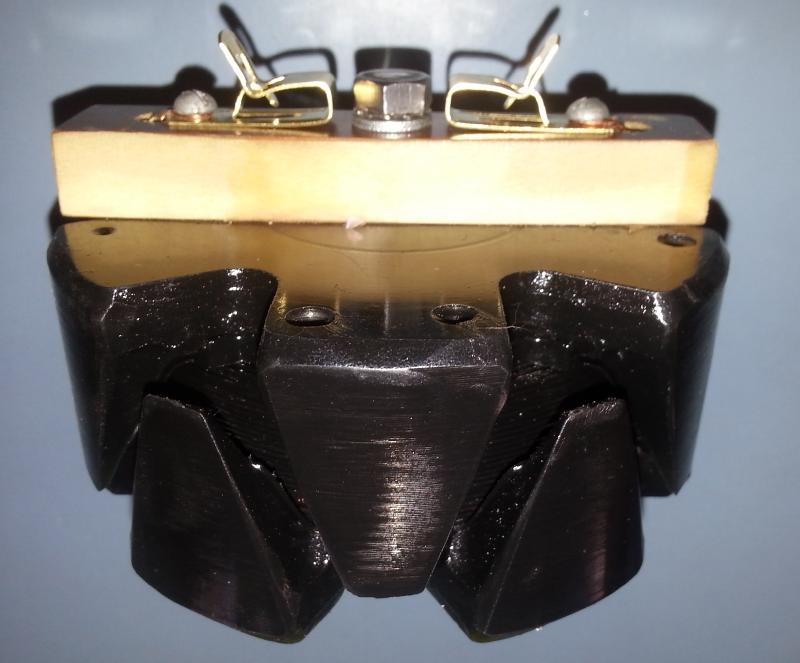| Author |
Message |
    
Ernie
Senior Member
Username: ernie
Post Number: 2171
Registered: 01-2002

| | Posted on Saturday, November 14, 2015 - 03:28 pm: | 




|
I have been making these coils for years.
Just an alternator rotor with the shafts cut off. I got a little carried away with this one and cleaned it up in the lathe.

 |
    
Andrew Munns
Senior Member
Username: johnoxley
Post Number: 150
Registered: 04-2010
| | Posted on Sunday, November 15, 2015 - 02:18 am: | 




|
Great concept - Certainly beats a bunch of soft iron wires and expense of copper wire. |
    
Truman Dodson
Member
Username: tmann
Post Number: 9
Registered: 09-2015
| | Posted on Thursday, December 03, 2015 - 08:05 pm: | 




|
Ernie, would you mind elaborating on the coil hookups?
What do the two contacts wire into, and does the magnetic portion of the alternator have to be set to a certain point?
Am I correct in thinking that the one contact is for the battery source, and the other to the plug?
Also, where do you get the insulation board.
I've looked for that , and the old insulating washers made out of similar stuff, and can't seem to find a source.
Thanks,
Truman |
    
Ernie
Senior Member
Username: ernie
Post Number: 2186
Registered: 01-2002

| | Posted on Friday, December 04, 2015 - 05:53 pm: | 




|
This is only the alternator rotor. The ends of the rotor winding are attached to the clips, one on each end. There are no settings. The voltage regulator is gone along with the rest of the alternator.
The insulation board is phenolic. I have no idea where to get it. I have had some for years that I use sparingly.
One side of the coil goes to the insulated terminal on the igniter. The other terminal goes to the battery.
This is for make and break not sparkplug ignition.
Hope this helps
Ernie |
    
J.B. Castagnos
Senior Member
Username: jb_castagnos
Post Number: 1128
Registered: 07-2002

| | Posted on Friday, December 04, 2015 - 07:24 pm: | 




|
I bought phenolic from McMaster-Carr, type in Garolite. We use the 1/2" for timer rings, there are different grades, don't remember which one I ordered, probably the machinable. |
    
miro forest
Senior Member
Username: miro
Post Number: 832
Registered: 11-2001

| | Posted on Wednesday, December 09, 2015 - 10:44 pm: | 




|
Since this is low voltage ( 6 - 12 V) almost any kind of fiber or plastic insulating sheet will be OK. I've used the plastic sheet from the door of a scrap microwave oven among other things.
The MW oven is also good for the transformer which you can use to make a spot welder or other neat-oh device.
Miro |
    
Truman Dodson
Member
Username: tmann
Post Number: 10
Registered: 09-2015
| | Posted on Friday, December 11, 2015 - 11:44 pm: | 




|
Thanks to everyone for the information.
Always enjoy making as much as possible myself anything for repairs,etc. on old engines.
Started thinking that I had learned a lot over the years - until I started reading what you guys know.
You guys are a wealth of knowledge, and thanks again for sharing it. I file ALL of it away, and somewhere down the road it always helps me get another rusty engine up and running.
Truman |


